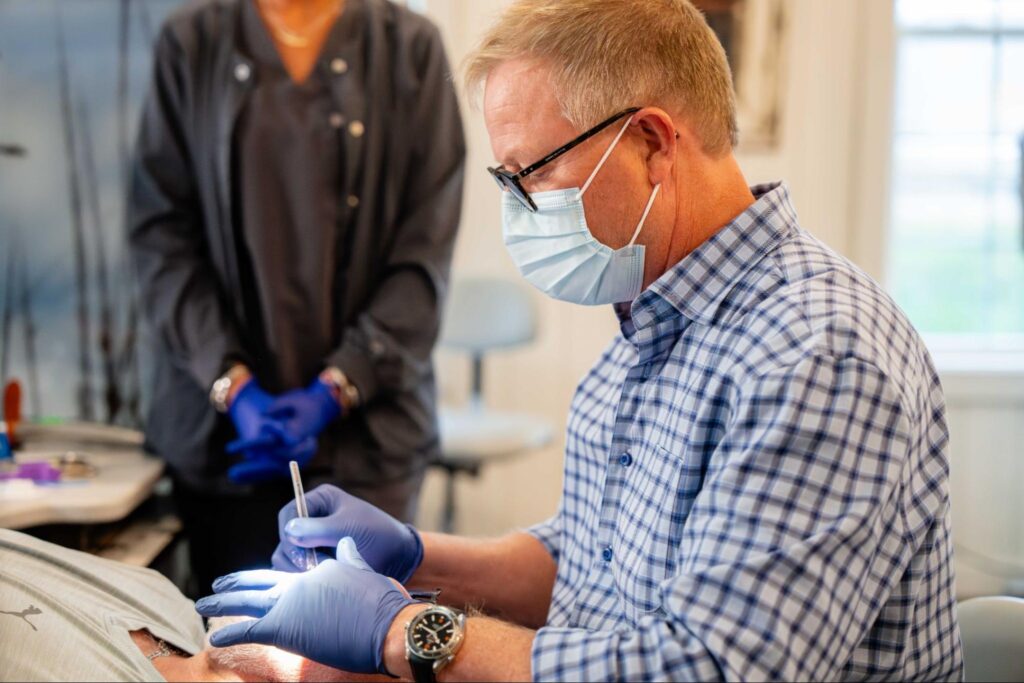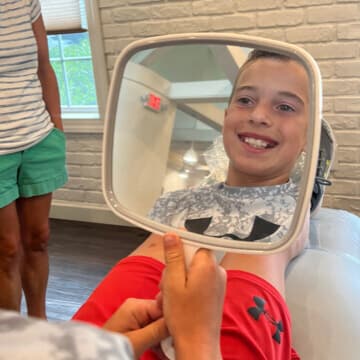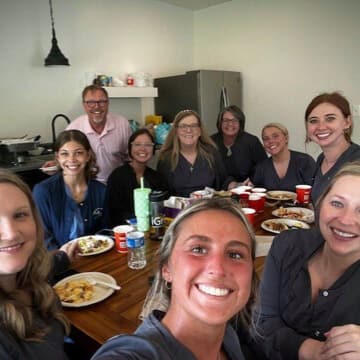Booking your first orthodontic appointment can spark lots of questions. You might wonder about age milestones, signs that you need metal or clear braces, or whether you’re too old to start. Whether you’re thinking about caring for your child, your teen, or yourself, we’re here to walk you through the best times to schedule that first visit. Below, you’ll find practical tips from Dr. McInnis on early checkups for kids, teens, and adults exploring braces or aligners. You’ll also learn what happens during that first appointment at our Upstate Orthodontics offices in Clemson and Seneca and how to prepare.
Why You Might Need an Orthodontic Appointment
Your teeth do more than look nice in photos. A proper bite from Dr. McInnis helps you speak, chew, and feel at ease when you smile. Orthodontic care goes beyond straightening crooked teeth, though that’s a big benefit. It can also fix overbites, underbites, or other alignment issues that might lead to wear on your teeth or jaw problems down the line.
So, when should you actually make that first appointment? The answer depends on your age and what you’re noticing in your mouth or your child’s mouth.
The Best Age for a Child’s First Visit
Our Upstate Orthodontics team recommends that your child have a first checkup by around age 7. That’s because some adult teeth have appeared, and your child’s jaw is still developing. You might see early signs of crowding or spacing. If any issues show up, small steps taken sooner can help you avoid bigger interventions down the road.
Don’t worry if your child is older than seven and you haven’t scheduled an appointment yet. There is no “deadline” for that first visit. Still, checking in before the tween years is a useful way to see what’s happening beneath the surface.
Why So Early?
- Detecting Problems: Early visits can reveal bite problems, crooked emerging teeth, or the effects of prolonged thumb-sucking.
- Planning for Growth: If Dr. McInnis sees something that could benefit from early action, you’ll receive clear recommendations for the next steps.
- Peace of Mind: If everything looks good, you’ll at least know what to watch for and when to come back.
When Teens Typically Start Orthodontic Treatment
Most teens start orthodontic care when their adult teeth have arrived or are close to doing so. You might notice crowding, a gap between teeth, or an overbite that stands out more as your child enters early adolescence.
Common Signs Your Teen May Need Orthodontic Care
- Teeth that overlap or look crammed together.
- A lower jaw that sits too far forward or back when your teen bites down.
- Difficulty chewing comfortably, leading to minor jaw aches.
- Self-consciousness about how their teeth look.
If you see any of these signs, it’s a good idea to call our Clemson or Seneca office for an evaluation. Teens are often prime candidates for braces or aligners because their jaws are still flexible, making it easier and sometimes quicker to move teeth into place.
Adults: It’s Never Too Late
Teens aren’t the only ones who can benefit from orthodontic treatment. More adults than ever are choosing braces or Invisalign to straighten teeth, correct a misaligned bite, or address issues they’ve lived with for years.
Why Grown-Ups Book Their First Appointment Later in Life
- Shifts Over Time: Even if you had orthodontic care as a teen, your teeth can shift over the years.
- Missed Opportunity: Maybe braces weren’t an option for you when you were younger, but now you have the means and motivation.
- Better Technology: Options like Invisalign or ceramic braces offer a more subtle look, which can be appealing to adults who want a discreet approach.
It doesn’t matter if you’re 18 or 58. Orthodontic treatment at Upstate Orthodontics can bring big benefits at any stage of life. Consider scheduling that first appointment if you’ve been thinking about how a straighter smile might boost your confidence or help you chew more comfortably.

Signs You or Your Child Might Need Orthodontic Care
While age is one factor, the best time to book your first appointment often depends on what you’re seeing or feeling in your teeth and jaw. Here are some telltale signs from Dr. McInnis:
- Crooked or Crowded Teeth: Overlapping teeth are more than a cosmetic concern. Crowding can make brushing and flossing harder, which affects overall dental health.
- Jaw Discomfort: If your jaw feels tense when you wake up or makes popping sounds when you chew, it might be tied to how your teeth line up.
- Mouth-Breathing: Breathing mostly through the mouth can point to issues with jaw shape or tooth alignment.
- Shifting or Gaps in Teeth: If you notice a growing gap or changing tooth positions, an orthodontist can spot the root cause.
- Difficulty Biting or Chewing: Teeth that don’t line up can lead to awkward bites, making meals less comfortable.
If any of these ring true for you or your child, picking up the phone and scheduling an orthodontic evaluation can be a smart move. Often, the sooner you look into these issues, the simpler the fix.
What Happens During a First Orthodontic Appointment
Feeling anxious about not knowing what to expect? You’re not alone. Fortunately, a first appointment is usually straightforward, with no major procedures that day. Here’s a quick look:
First Consult
You’ll start by sharing basic health info and your main concerns. Maybe you want to fix crooked teeth, or your child’s dentist suggested a checkup. This consultation helps Dr. McInnis understand your goals.
X-Rays and Photos
Our team may take X-rays or pictures of your teeth to see their positions below the gums. These images show if adult teeth are waiting to emerge or if there are any concerns with jaw alignment.
Exam
We’ll examine your teeth, gums, and jaw. This step is quick and painless—mostly just looking around and feeling for alignment clues.
Discussion About Options
After your exam, you’ll learn about what we found. If everything looks normal, you might just schedule a future visit to keep an eye on any changes. If braces or aligners could help, you’ll learn about treatment length and an estimated cost. You might also discuss whether early-phase treatment is helpful for younger kids.
Next Steps
By the end of the appointment, you’ll better understand what comes next: perhaps a simple follow-up in six months or a year, or maybe a recommendation for braces or aligners.
Frequently Asked Questions
Here are some of the most common questions we hear about first appointments in Clemson and Seneca.
Q: Do I need a referral from my dentist?
A: Not always. Many families and adults come to see Dr. McInnis without a direct referral, though your insurance might be a factor. You can call your provider or our office to confirm.
Q: Will it hurt?
A: The first visit itself isn’t typically painful. You might feel a little pressure from the exam, but there are no braces or wires yet.
Q: How long is the first appointment?
A: You can expect anywhere from 30 minutes to an hour. This includes X-rays, the exam, and a review of what we find.
Q: What if my child is only 6 or 7 but has crooked baby teeth?
A: It might still be helpful to bring them in. Our Upstate Orthodontics team can spot early issues even if your child still has mostly baby teeth. If it’s too soon to start any correction, you’ll at least know whether you should come back in a year or two.
Q: Am I too old to start orthodontic treatment?
A: You’re never too old! Adults often discover that it’s easier than they imagined. The steps are similar to teen treatment, though it might take slightly longer to move adult teeth.

Ready to Schedule in Clemson or Seneca?
If you’re near Clemson or Seneca and want to set up your first orthodontic appointment, we’d be honored to meet you. At Upstate Orthodontics, we focus on honesty, kindness, and great results. We welcome questions, concerns, and that natural curiosity about what comes next. Go here to schedule your free consultation with Dr. McInnis.





